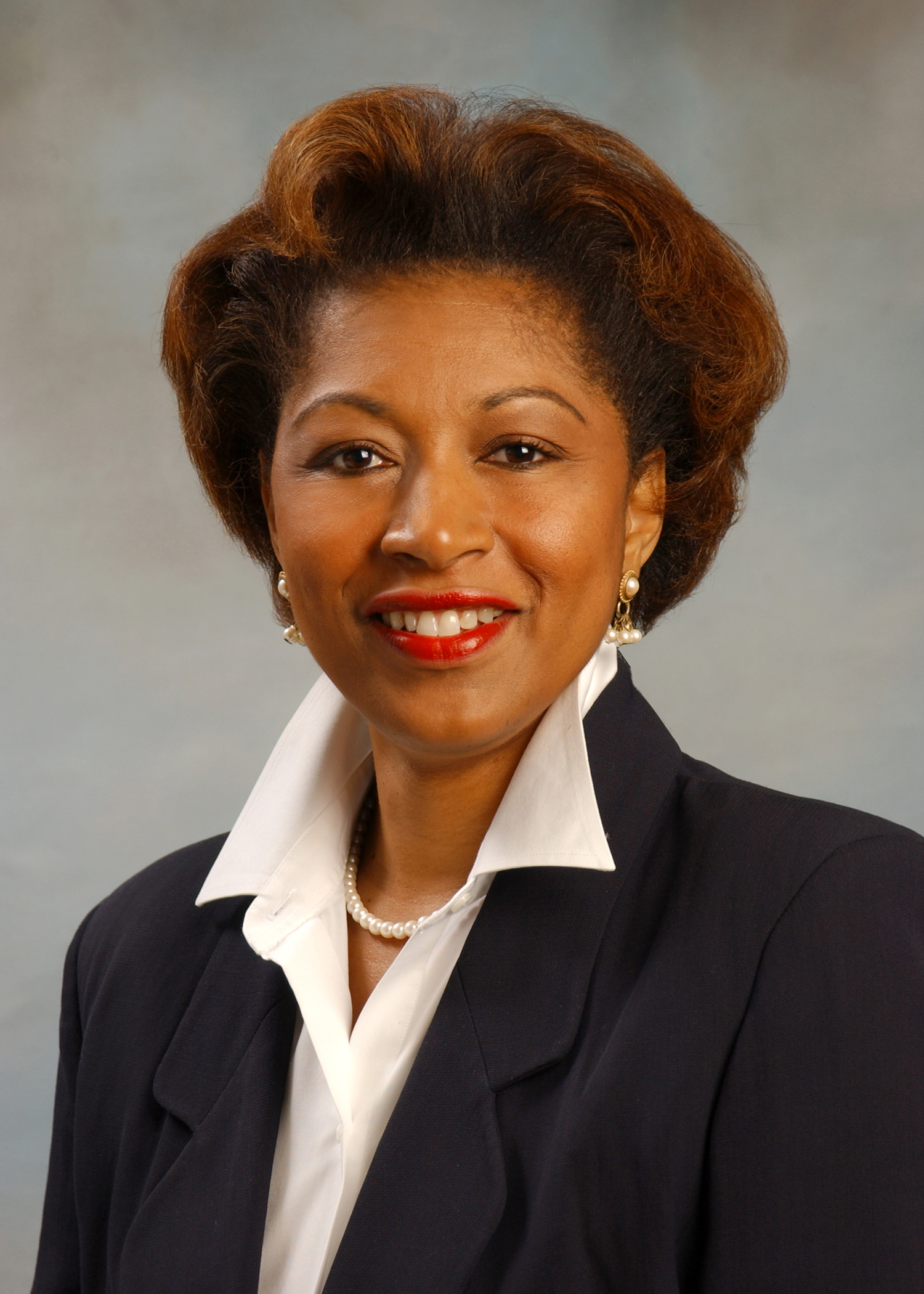
Rosa Rountree campaigns for accurate and consistent figures for the tendering of tolling concessions.
If there is one thing about which Rosa Rountree is passionate, it’s numbers. That’s not surprising for a graduate accountant, but it is not only the quarterly accounts that concern the CEO and president of
Rountree’s experience in the transportation sector started some two decades ago as operations manager at the Orlando Orange County Expressway Authority (now Central Florida Expressway Authority), where she managed the E-Pass electronic toll collection systems - one of the first such installations in the US.
Then came a spell in the commercial sector with
After being in Washington D.C. during 911, she decided she wanted to work closer to her family. In 2002, Rountree was recruited by PBS&J (later acquired by
In another three years, she was back in the public sector in Atlanta, as executive director in charge of the Georgia State Road and Tollway Authority’s daily operations, while simultaneously advising state and local municipalities on transportation policy. At that time, she also served as an executive committee member on the Transportation Research Board. “That was a great opportunity to touch more than just tolling authorities, and it also gave me exposure to a number of DOTs and their policies.”
Prior to the move to Canada, Rountree worked as an independent consultant advising on Hot Only Toll (HOT) lanes and Truck Only Toll (TOT) lanes. It was during this time she was recruited to manage the Golden Ears Bridge all-electronic toll collection system for Transroute International, currently Egis Projects in Vancouver Canada. In late 2013, she moved back to Florida to start Egis’ transportation operations in the US.
Rountree has an almost unrivalled breadth of experience on of the tolling sector: state authority, contractor, concessionaire and consultant which places her in demand at national and international toll conferences. “When asked, I speak on operational topics.
A subject in which I am very familiar. With over 20 years of experience, I have gained a bit of knowledge over the years assisting or supporting more than 15 agencies.”
The roots of her operations experience date back to those early EZPass and Fastrak implementations.
When asked if she could share some challenges she faced delivering projects, she responded, “Delivering on an under-performing project where the Traffic & Revenue projections were overstated by as much as 40%. As the contractor, we anticipate reasonable deltas and we are prepared to make the appropriate adjustments. Unfortunately, when the predictions are no longer reasonable it places the contractor in financial risk. My responsibility during those mishaps was to identify revenue improvements and cost reductions, or sometimes even exiting the project.” Do you see those mishaps occurring today? “Yes, on greenfield projects.
Data transparency
“I’ve had the chance to touch a wide range of projects, more than most people get to see in our industry. This is why I say collective data transparency is essential, if not critical, from the tendering process through operations phase, to achieve maximum revenue potential and long-term profitability for the project. It is also basic to arrive at realistic benchmarking.“The tolling sector needs to be transparent and honest with itself,” she says, adding, “so we can ascertain how information issued or used for tendering and benchmarking purposes is relevant to our individual project objectives.
“To generate competitive, comparable and reliable bid tenders, for instance, technical and pricing information, criteria and rules need to be consistent, complete and identical to all bidders, as much as possible. Information disparities invite opportunities for variances in the results and an uneven playing field. A contractor who assumes 10,000 images for processing and informs the client of their pricing assumptions, has complied with the submittal requirements. After contract award, it is revealed that there are 100,000 images for processing, clearly opening up a pricing variance.”
“When it comes to benchmarking, truth of information is relative depending on scope of data used and relevance of purpose and objectives behind such information. When variances exist, a change order potentially looms on the horizon. And this can mean capital expenditures above the original price proposal.”
However, Rountree says that every tender documentation would be declared as fully transparent, clear, accurate and complete.
But if you were to examine the contracts after a year of start-up, most would have a variance between the information provided in the tender and actual situations. This variance usually means the original tender documentation had insufficient or inaccurate information at the outset. As a result, a change order is typically issued to cover new work or additional scope.
So what would improve the outcomes for both parties?
“Standards,” she replies without needing to think. “In accounting, there is GAAP, or General Accepted Accounting Principles. But in sectors like toll collection, there are no standards or structured criteria, so each company or authority defines what it believes is appropriate for its operation, and measure and act accordingly.”
All tolling agencies aim to run efficient operations and frequently re-evaluate the methods and costs of collecting tolls. There have been several studies looking to compare the cost of collecting tolls across several organisations, but here again Rountree sees an issue: “It depends what is included in that cost.
“For instance, where all electronic tolling is being introduced, up to 20% of users contact the customer support desk - which is very expensive. Some authorities and concessionaires invest heavily in marketing and education prior to the introduction, so the demand on the customer support desk is much lower. But should the education budget be included in the cost of collecting tolls? Some say yes; others say no. There is no consistency.
“Also, consider two similar open road tolling agencies: one in the centre of a state; the other near the border. If there is no reciprocity with the neighbouring state, there may be no way of enforcing toll collection from out-of-state vehicles. Therefore, in any comparison, one operation will have a standard level of uncollectable funds, whereas the other is likely to be much higher.
The next question is: How should that be included in the cost of collecting tolls?
“Several consulting groups have tried to compare the costs of collecting tolls, but if you look closely, those comparisons are not really on a like-for-like basis.”
So would a tolling industry version of the GAAP standard help, and if so, should this not have been set in motion during her time on the council of the
“The ‘best standards’ are set by bodies not immediately impacted by the imposition of said standards. Independent bodies can take a dispassionate or arms-length view of what is required, without being influenced by current industry practices. So I am not fully convinced that such bodies would be appropriate to set standards. I would also go further by challenging the usefulness of such standards.”
She explains her apparently contradictory position thus: “Individuals and businesses only do things that are important or relevant to their objectives. If an agency is clearing its expenses, repaying its debt and is profitable, and there are significant funds remaining, it might choose to do more for the community such as contributing to parks or support an education program.
“Another agency may choose to contribute to mobility, contributing its surplus to transit, bike path, and pedestrian walkways. So how relevant is the comparison?
“If it is decided to benchmark, what indicators should be benchmarked and why those particular items?
“We do need standards but maybe the approach to standardisation is guidelines, recommended practices and common definitions. A committee formed to collect the existing industry practices with the objective to identify the best practices.”
Standards should leverage existing applicable standards. As our industry moves from traditional toll collection in the lane, to All Electric Tolling where the support is at the contact/call centres; we should consider contact centre standards or recommended practices. The speed of answer; the average abandon rate; average hold time and the cost per contact are reportable standards that are utilised to measure the success of a contact centre.
“We should be cautious when presenters provide absolute numbers for comparison: the cost to collect an ETC transaction; the cost for interoperability; and the cost for services. The substance is in the details and should be exploited as information, not as the barometer.
“No two agencies are the same. An agency’s objectives are typically driven by legislation, bond covenants and board directives. Can we compare an agency that establishes customer service as its highest priority to an agency that establishes mobility as its highest priority? Both priorities benefit the end users, but the potential cost to achieve each priority is much different. And yet the end result achieves the agency’s objectives.”
What about the European situation where regulations limit concession durations to the point where the concessionaires have recouped their capital and made a ‘reasonable profit’? Will accounting standards ensure compliance, or will agencies be able to frustrate the legislators and delay the point at which that profit has been achieved?
“Of course they can,” she replies, adding: “I’m in the private sector and the margin of profit depends on the company’s objectives. Those objectives govern the project terms and expenditures such as operational improvements, educational program, social and community commitments and even executive’s retirement/parachute.”
She remains unimpressed, saying: “You are still placing the decision in the concessionaries’ control. They could say they want to make $20 million from this concession – but that objective does not have to be achieved immediately. It could be achieved over time allowing the concessionary to determine its destiny.
“To make that system work, the regulators and awarding authorities should ascertain the revenue the concessionaire will collect from tolls and limit its allowable operating costs to ‘X’ and say the concessionaire will make an operating surplus of ‘Y’ each year so it will reach the desired profit in ‘Z’ years.”
Even if that scheme was implemented, Rountree says the challenge would be how to ensure that the concessionaire is complying with these rules and that the regulations are fair for all.
“Whatever basis is selected, the key to successful toll concessions is having reliable, accurate and consistent figures from the start. By being collectively transparent, the playing field is levelled to the most objective and realistic position possible.”
She concludes by saying: “I hope this article will invoke an examination of conscience. In the final analysis, we need to uphold and maintain the integrity of our procurement processes so the outcomes are fair and truly comparable in every way. We owe it to the travelling public and taxpayers.”











